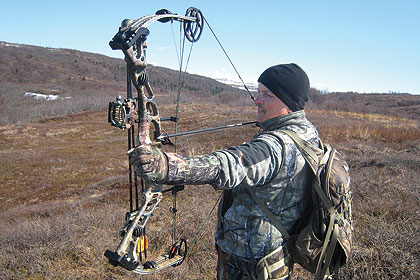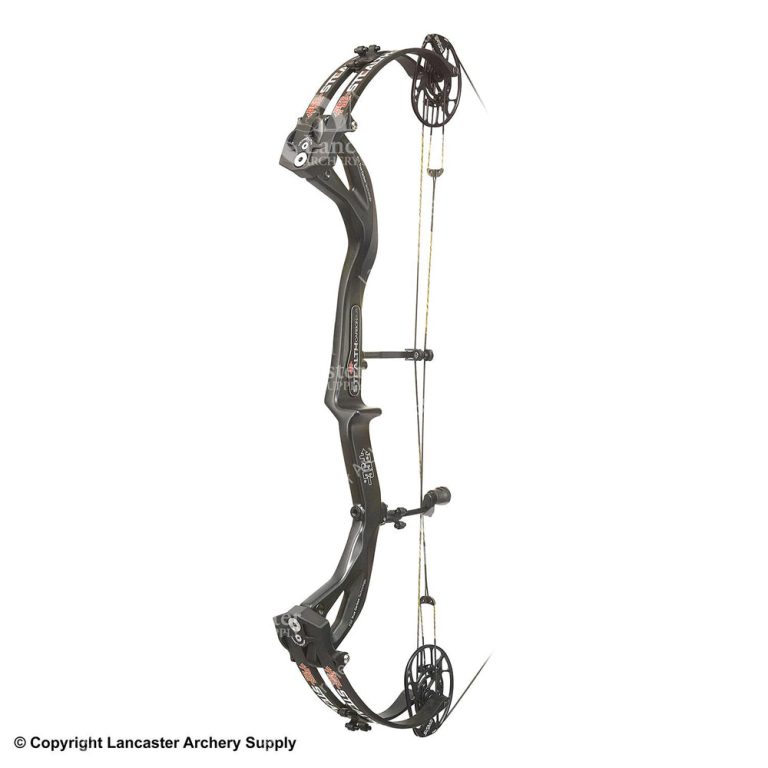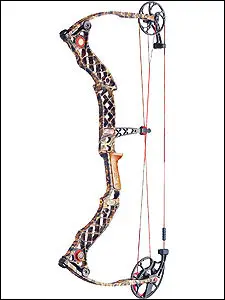Balancing A Compound Bow
In the world of archery, the compound bow is a remarkable fusion of history and innovation. With its combination of traditional principles and cutting-edge technology, this bow has become the preferred choice for many archers. This guide provides an in-depth exploration of compound bows, explaining their mechanics, advantages, and how to choose the right one. From the power and accuracy they offer to the compact design ideal for hunting blinds, compound bows have truly revolutionized archery. And with regular maintenance and proper safety precautions, these bows provide a thrilling and unique experience for archers of all levels.

What is a Compound Bow?
A compound bow is characterized by a system of cables, pulleys, and cams that assist the archer in holding a high poundage at full draw. Unlike traditional bows, where the draw weight increases as you pull back, compound bows reach a peak weight and then “let-off” to a lower holding weight, allowing the archer to take more time when aiming.
Key Components:
Limbs:
Unlike the straight limbs of a longbow or the curved limbs of a recurve, compound bow limbs are much stiffer, providing the power behind the arrow. The stiffness of the limbs allows for the transfer of energy efficiently, resulting in faster arrow speeds.
Cams:
The cams of a compound bow are the oval-shaped devices that rotate as the bow is drawn. They dictate the draw cycle’s feel and the bow’s overall performance. The shape and size of the cams determine the let-off, draw length, and draw weight of the bow.
Cables & Strings:
These are integral to the functioning of the cams, transferring energy to the limbs and arrow during a shot. The cables and strings are under immense tension when the bow is drawn, and they help to hold the limbs in their correct position, storing energy until the release.
Riser:
The riser is the central part of the compound bow, usually made of aluminum or carbon, to which limbs, sights, stabilizers, and other accessories are attached. It provides stability and balance to the bow, and its design can impact the overall weight and feel of the bow.

Advantages of Compound Bows:
Power & Speed:
One of the advantages of compound bows is their ability to generate immense power, propelling arrows at tremendous speeds. The combination of the bow’s design, including the cams and stiff limbs, allows for increased arrow velocity, which is ideal for hunting or competitive shooting.
Accuracy:
The mechanical advantage and the ability to hold the bow at full draw for longer periods allows for better aiming. With a compound bow, you can achieve a consistent anchor point, resulting in improved accuracy and tighter groupings.
Compact Design:
Compound bows typically have a more compact design compared to traditional bows. The shorter limb design makes them more manageable in tight spaces, like hunting blinds or when maneuvering through dense vegetation. This compactness also enhances portability and ease of use.
Adjustability:
Many compound bows allow for adjustments in draw length and draw weight, making them suitable for archers of various sizes and skill levels. The ability to fine-tune these aspects of the bow ensures a comfortable shooting experience and helps archers progress and improve their skills.
Choosing the Right Compound Bow:
Purpose:
It is essential to consider the purpose for which you will be using the compound bow. Are you targeting big game, participating in target archery, or maybe bowfishing? Different bows are designed with specific purposes in mind, and choosing the right one for your intended use will optimize your performance.
Draw Length:
Ensure the bow fits your personal draw length. Draw length refers to the distance a bowstring is drawn back before it reaches a stopping point. Using a bow with an incorrect draw length can affect accuracy and overall shooting experience. It is crucial to have a bow that matches your specific draw length to achieve optimal performance.
Draw Weight:
Draw weight is the amount of force required to pull back the bowstring to full draw. Starting with a weight you can pull back comfortably and consistently is important, as this will allow you to develop proper form and technique. It is always better to start with a lower draw weight and gradually increase as you build strength and proficiency.
Let-off:
Let-off refers to the percentage of weight reduced when the bow is at full draw. It allows the archer to hold the bow drawn for longer periods with less effort. A higher let-off is favorable for those who require more time to aim and steady their shot. However, it is essential to find the right balance between let-off and holding weight based on your shooting style and preferences.

Maintenance & Care:
Compound bows, with their intricate design, require regular maintenance to ensure optimal performance and longevity. Periodically inspect the strings, cables, and cams for wear and tear. Additionally, it is crucial to keep the strings and cables properly lubricated to minimize friction and prevent damage. Professional tuning once a year can also help identify any potential issues and ensure that your bow is functioning at its best.
A Word on Safety:
The power of a compound bow should never be underestimated, and safety should always be a top priority. It is crucial to use arrows that are recommended for your specific bow’s draw weight, as using improper arrows can result in damage to the bow or risk of injury. Additionally, always ensure your shooting lane is clear of any obstructions or people, and be aware of what lies beyond your intended target to prevent any accidents.

Conclusion:
The compound bow, since its invention in the 1960s, has revolutionized the archery world. It blends age-old principles with cutting-edge technology, offering archers a unique and thrilling experience. With their power, speed, accuracy, compact design, and adjustability, compound bows have become the preferred choice for many archers, whether they are engaging in hunting, target archery, or other forms of archery. So, whether you’re a seasoned archer or just beginning your archery journey, the compound bow is an excellent choice that honors tradition while embracing innovation.








